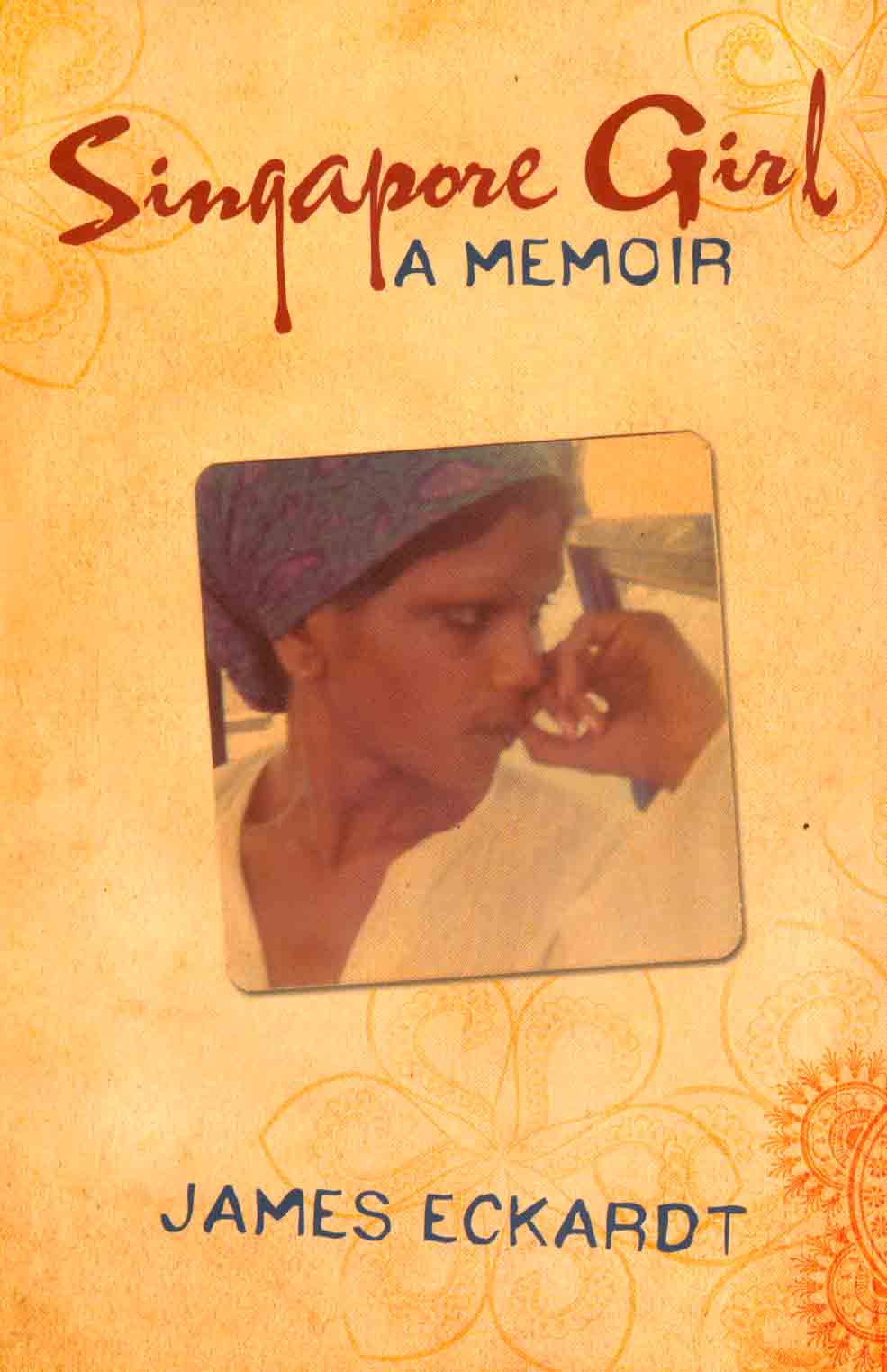 “One thing for sure. I never want to be an old ladyboy.”
“One thing for sure. I never want to be an old ladyboy.”
-a WoWasis transgender friend (2002)
Veteran Asia writer James Eckardt has written a number of fascinating books on the Southeast Asian scene, and he’s a good writer, having worked for the Bangkok Post, The Nation, and the Phnom Penh Post. His working creds include a sojourn in the Peace Corps, and the sailor of a small ferro-cement boat. Singapore Girl: A Memoir (2006, ISBN 978-981-05-6234-2) is, to a very large extent, a celebratory, tortured, heartbreaking, riotous love letter written to Milly, a transgender person he met on Singapore’s Bugis Street, while a callow youth of 24. It’s a compelling book on several levels, chronicling the passion of youth, juxtaposing it with the semi-poverty that in the end destroys many young relationships, as a new player arrives with a bigger bank account. Old story.
Eckardt, a former seminarian, is candid here about his initial discomfort at falling in love with a transgender person, and writes well in describing those feelings of knowing one’s not gay, yet being involved with a lover that was born biologically male. It’s a complex story, too. Milly is beautiful, surrounded by an endless sea of lovers, one of whom, by the end of the book, becomes a confidant of the author. What we here at WoWasis is the self-effacing manner at which the author writes about himself. Yes, he’s young, he can be stupid, he can be judgmental, can be immature, and it’s all wrapped up in the knowledge gained thirty years after the fact. The reader cringes along with him with every youthful indiscretion, remembering and ruing one’s own.
The structure of the book is different, too. Beginning in the mid-1970’s, checking in with Milly in the mid-1980s, and coming to a conclusion thirty years later, all neatly — if not happily — wrapped up. We wished the author wouldn’t have used the word “whore” so much. We find the word too pejorative to describe those who choose to sell sex by the hour, instead of selling it by the decade, or the lifetime. Those women we call girlfriends and wives. Eckardt ultimately does understand the transgender world in which he immersed himself, though. This demimonde doesn’t suffer fools gladly, and the author soon finds his sea legs in this netherworld, although, like many who have found romance with working ladyboys, he finds he cannot afford to pay the freight involved with getting her away from the working world on the street. It can be expensive: shopping and traveling are just two pricey elements involved with dating someone who can make great money by working by the hour while being simultaneously kept by a part-time lover (in Eckardt’s case, an offshore oil-rig worker).
Youth and beauty define the world of wanted women, those who turns heads when they walk into rooms and dazzle passers-by on boulevards. While many women find it challenging to deal with the onslaught of aging, ladyboys seem to find it even worse. It’s everything from the thickening of the voice to the emergence of other male characteristics that creates havoc. They look in the mirror, which doesn’t lie. Out on the street, they see transgenders in their teens and twenties, knowing they can no longer compete on the same level as before. They ruminate increasingly on men they’ve known and thrown away. What are they doing now? Are they still book-reading bums without a dime?
Or like Eckardt, did they eventually get a real job, make good money, settle down, and have a wife and a few kids?
There’s really something interesting in this book for everyone, and it’s a shame it got buried, in terms of distribution (we’ve never seen this book in an Asian bookstore). It’s about unrequited love, adventure, romance, tragedy, and doing things one really doesn’t think one should be doing, but does anyway. Mature readers will stop every few pages to remember a past lover or two, and maybe reconsider past actions and events. Reliving and recreating history is a study in revisionism that is partial to readers of a certain age. Younger readers may well see this book as inspiring, in terms of breaking rules that probably shouldn’t be there in the first place.
All in all, this is a damn fine story. And if we forgot to say it, anyone that has had a relationship with a transgender person will find a common bond with the author, in essence a dialogue with someone else who’s “been there, done that.” Buy this book here at the WoWasis eStore.
Leave a Reply